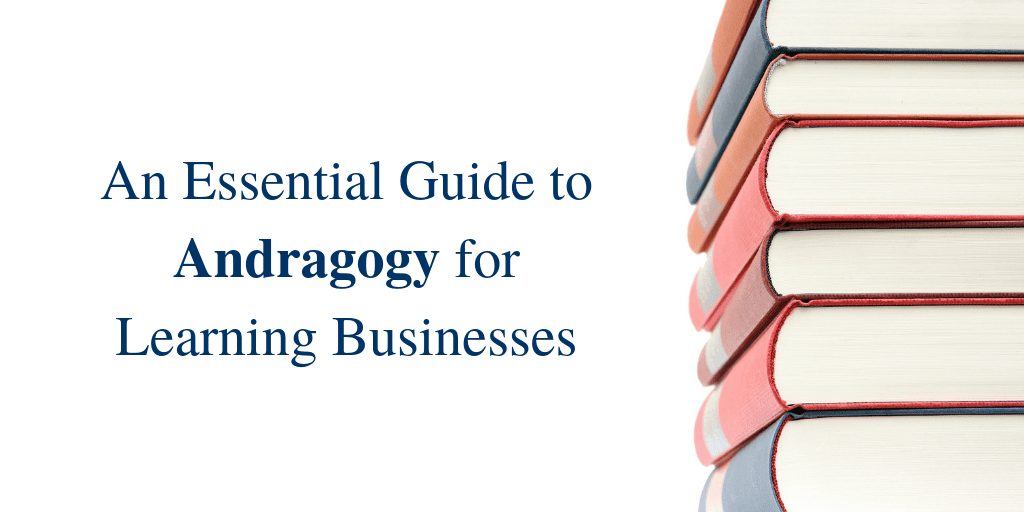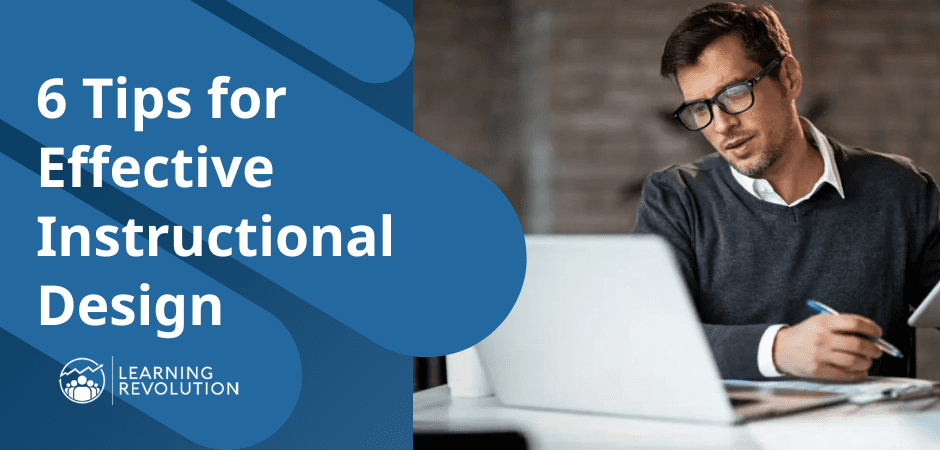

Teaching adult learners has many potential advantages over teaching younger students.
For one, your learners have much more life experience, and this experience can be leveraged as part of the knowledge that is shared among the participants in your class.
Also, leaving aside situations where workers are required to take mandatory training (e.g., to comply with industry regulations), adult learners typically choose to continue their education, and thus are likely to value your teaching—and your time—far more than students who are required to be in your class.
Finally, if your aim is to make money teaching online, adults obviously tend to to have much more direct control over the decision to spend money on an online learning experience.
However, while you may not need to put the same effort into engaging your class that a school teacher would, you still need to build rapport with your learners and develop a teaching strategy that maximizes their learning outcomes. Understanding how adults parse and retain new knowledge is critical to creating a learning experience that achieves its goals.
So, in this post, we’ll take a look at what it takes to teach adults effectively.
Teaching Platforms
Looking for a platform to host your online courses and teach adult learners? Be sure to check out The Very Best Online Course Platforms Right Now. Here are some of our quick picks:
Thinkific – Best standalone platform; great for solo edupreneurs, small businessesKajabi – Best all-In-one platform; run your main website and course site together
LearnDash – Best WordPress course platform options; for those who want to keep it all in WordPress
Udemy – Best marketplace platform; get a pre-made market to sell courses online
Talent LMS – Best small business-extended enterprise option for more complex needs and business-to-business course sales
Keep your lessons relevant
The most significant way adult learners digest information is through real-world filters.
As already noted, adults have far more life experience than children, and that comes with a stronger need to understand the hows and whys of your material. By making connections with their own experiences, they confirm for themselves the truth of your teaching, and your lessons will stick more strongly in their minds if you can make those connections for them.
Including real-world applications or outcomes of your lessons when teaching adult learners is important so your students can understand and visualize how to apply what you teach. Use examples of times when people should follow your teaching in their everyday lives, or of the pitfalls that can befall them if they fail to do so.
By putting your lessons in context, they become easier for adult learners to understand and retain.
Focus on your learners’ life experience
If you’re teaching a coding bootcamp for beginners, for example, don’t overwhelm them with jargon.
Equally, if you’re teaching business leaders a new recruiting strategy, don’t talk down to them.
In general, when teaching adult learners, use familiar terms and address them at an appropriate level for their experience, background, and age. Sometimes using acronyms and buzzwords is the most appropriate way of teaching—it can quickly convey your experience and authority within your field, and reassure learners that you know what you’re talking about. However with a novice audience, too many new terms will only be confusing. You want your learners to be able to follow what you’re saying without having to focus on deciphering the meaning of your words.
The average age of your learners is also an important consideration when you choose how to approach teaching your masterclass. Bear in mind that older learners might not be up to date with the latest online trends and fads, while young adult learners will be put off by edupreneurs who try to emulate their style of talking.
Most learners respond best when educators use established frames of reference and limit their use of slang and jargon.
Tell stories as you’re teaching
Stories have been used as mnemonics for centuries. From recalling the colors of the rainbow to the order of notes in music, children are taught a significant amount of information by converting it into stories. As adults, stories remain powerful memory devices. Adult learners are often more emotionally driven, and storytelling can harness their emotions and help them retain your lessons.
Tie storytelling into your real-world examples by talking about a time your lesson helped someone, or could have helped them. If you use slides or charts to illustrate your masterclass, choose powerful images, colors, and even fonts that are evocative of particular emotions.
Think about the educators who have most influenced you in the past, and the lessons that stand out most sharply. What methods did your teachers use to gain and keep your interest? What technique made one lesson stand out above the others? Chances are good that stories were a part of their effectiveness – and you may even be able to borrow from some of those stories.
Break up information to avoid cognitive overload
Adult learners can follow more, and more complex, information than children, but you should still aim to structure your masterclass into compartmentalized lessons that progress logically as you teach. By breaking down your masterclass, you can ensure that all learners follow your teaching, and build in time to recap each section and ensure everyone is keeping up.
Use notes or slides to highlight the key points of each lesson, and provide learners with these materials either before or after your masterclass so they can independently review what they learned. Make a list or bullet points of each step of your masterclass, and identify where individual sections begin and end. This style of teaching will help keep you on track, as well as improve your learners’ outcomes. If you have to pause for any reason, or find the class discussion wandered away from your original subject, it’s easy to return to your lesson plan and continue from where you left off.
Provide feedback in the moment of need
When creating your online course, masterclass, seminar, or other offering, it’s a good idea to structure your teaching so you have space for a recap and questions at the end of each section. This ensures that your learners can keep up with your material and prevents anyone from being left behind. This is especially important if your masterclass is particularly long, or covers a wide range of material.
While interruptions to your teaching can be disruptive and prevent students from learning, it’s important to correct mistakes or wrong assumptions the moment you become aware of them. This prevents the incorrect idea from taking hold and confusing learners. It is almost always better to interrupt your masterclass at the “moment of need” (the point at which the mistake has been made) in order to set your learners on the right path, rather than circle back to it at a later stage.
Make your material visually stimulating
It isn’t only children who find color and images appealing. If your handouts and slides are too plain they become boring, and your learners’ minds will switch off. Instead, attract learners’ attention with the judicious use of color, fonts, and pictures to highlight important information and boost the memorability of your masterclass.
Be mindful of going too far with this tip—too much color, or too many images, also detracts from your lesson. If your slides and handouts are visually overwhelming, that can also turn learners off. Instead, aim to have one focal point on each page. It could be highlighting key words or phrases in a different color or font, including an amusing doodle that demonstrates the point of your lesson, or switching out boring bullet points for a subject-relevant icon.
Remember that whatever element you choose to stand out will be the thing your learners remember most clearly, so make it count.


Encourage questions and discussion
Adult learners typically need to understand new material in the context of their own life experiences, and one of the best ways to make those connections is by talking. Allowing your learners time to ask you questions, and to discuss your lessons among each other, is a great way of helping cement your teaching in their minds. It’s also a good time for you to spot any mistakes or incorrect assumptions your learners are making, and by opening the floor to general questions you might find learners are approaching your material in ways you hadn’t envisioned. This provides invaluable feedback and insight into your teaching, and gives you the opportunity to make adjustments in real time.
When choosing a host for your online educational offerings, look for the option to include a live chat alongside your video so learners can make notes, talk, and ask questions. Some learners will always be reluctant to speak up in a group setting, so allowing them to send you messages or ask questions in writing will encourage more participation and generate better results than asking learners to talk before the whole group.
Be flexible
Unlike kids, adult learners don’t have to be kept to a rigid schedule to keep learning. Structuring your courses is a great idea, both to keep you on track and to help frame your lessons in a logical, progressive way. However you can afford to allow short breaks and discussions without your learners losing track of what you were teaching.
Trust in your learners’ enthusiasm for your subject, and their passion for learning from you. Many school teachers are addressing a captive audience who would rather be elsewhere, and turning your back for five minutes can quickly result in conversation moving away from the class material and toward something more interesting. When you host a masterclass for adult learners, you and your lessons are the most interesting thing. This means you can relax a little and let your masterclass flow more naturally.
Broadening the scope of discussion during a learning experience is also a great way of understanding how your learners are interacting with your teaching, and what information they’re really taking away from your class. Listen with an open mind and you can learn a lot about becoming a better educator. If you immediately close down any discussion you think isn’t relevant, you’ll never understand where the original connection to your material came from.
Ultimately, you control and lead your class, so don’t be afraid to make the call to get back on schedule once you think general discussion has gone on long enough. But by opening the floor to your adult learners, they can teach you as much about being an edupreneur as you can teach them about your subject.
Additional Resources
More on adult teaching and learning:
- Adult Learning 101 for Edupreneurs
- An Essential Guide to Andragogy for Learning Businesses (Leading Learning)
- Presenting for Impact – a free online course for creating more educational effective presentations
Course creation and improvement:
- How to Create and Host an Online Masterclass
- 7 Steps to Record a Successful Virtual Presentation
- 13 Proven Ways To Increase Online Course Completion Rates
- 7 Ways to Improve Your Online Course Retention Rate
Table of Contents



